Increase the distance, increase the nutrition
Proper hydration and nutrition are critical if you are going to do long distance waka ama racing or doing long distance training. We have an OC6 crew who have been going out for 20 – 25km paddles on a Saturday morning since early June to help Pete with his training for the Queen Lili‘uokalani Long Distance Canoe Race in Kona, Hawaii. Its been great fun. Pete decided to up the anti and try for a 44km paddle (Nelson marina to Cable Bay and back) and then a 36km run back from Kaiterteri.
Long distance fitness is not something that just happens. We’ve been paddling with Pete since early June and gradually building up the distances. The epic trips were Cable Bay and back in late July (44km), and Kaiteriteri to Nelson across Tasman Bay (36km) after winning the winter series in mid August. You can read about Pete’s training on the Matiahi Outrigger Canoe Club site.
Protein before and after is the key for me
You need a solid nutrition and hydration plan for before, during and after a paddle. Good hydration a couple of days beforehand makes a difference. Protein is the key to recovery so a high protein meal about 2 hours before the paddle and immediately afterwards works for me. I often take a few sips of chia drink before I start, then I drink the rest as soon as I get back followed by bacon and eggs when we go for coffee at Devilles afterwards.
200 calories per hour needed
I was lucky enough to be included in the crew who did the full distance on the Cable Bay run. It was quite a step up for me. The other 3 have all done Long Distance Nationals and ‘ironed’ Takapuna Beach Cup (both around 30-36km km) before. My biggest distance was 25km a few weeks beforehand. I had come off that paddle really tired. I topped up with a protein drink (Chia) as soon as I got back and then had bacon and eggs for lunch, but I spent the rest of the weekend recovering (lying on the couch reading a book) because I had only used electrolyte drops in my water during the paddle. I had taken no extra calories. It wasn’t enough.
As soon as the 44km was discussed I knew I needed to get some help. My son is a long distance runner and he took me to the Kiwi Multisports shop in Tahunanui where we talked hydration and nutrition. Apparently you need around 200 calories per hour. A 44km paddle is 4 to 4.5hours so that meant 800-900 calories.
I ended up buying some sachets of Tailwind hydration (the non flavoured one), a variety of GU gels and a water bottle that would allow me to take my chia drink with me. (You have to be very careful with chia as it gets stuck in the nozzles of normal hydration systems.)
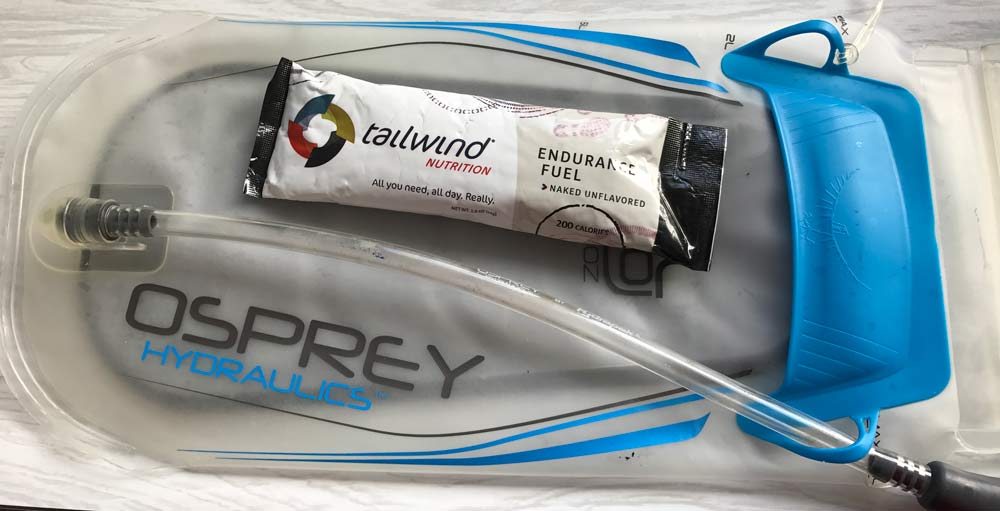
A Good Hydration System
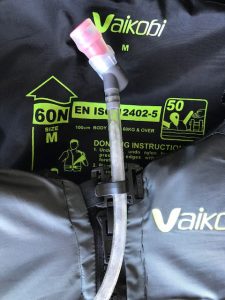 I have a Viakobi lifejacket (from Shane at the Kitesurf shop – also a great place to have a coffee after paddling from the beach) with a back pocket for a hydration pack. Some paddlers prefer waist hydration systems that they can tie around the seat as not everyone enjoys the weight on their back. I like mine because I have added a clip so that I can access the hose to drink at any time without using my hands. Small, frequent sips seem to work for me. The others drink every 20 mins or so.
I have a Viakobi lifejacket (from Shane at the Kitesurf shop – also a great place to have a coffee after paddling from the beach) with a back pocket for a hydration pack. Some paddlers prefer waist hydration systems that they can tie around the seat as not everyone enjoys the weight on their back. I like mine because I have added a clip so that I can access the hose to drink at any time without using my hands. Small, frequent sips seem to work for me. The others drink every 20 mins or so.
When you are paddling you can’t use your hands (unlike running). So having a proper hydration system is important. Water bottles just don’t work as it takes much too long to find the bottle, open it, drink and then put it back. (Especially if the paddler at seat one has his water bottle is tucked in the bucket behind seat 2. So 2 has to fossick in the bucket, trying to snag the water bottle from amongst all sorts of stuff. Its very frustrating.) There is just too much paddling time lost.
Tailwind Endurance Fuel & GU gels
Tailwind Endurance Fuel combines complete fuel, hydration, and electrolytes in a tasty drink that won’t upset your stomach and was designed to overcome the common nutrition problems faced by ultra endurance athletes in events like 50’s, 100’s, 24-hour, and multi-day epics. Using a blend of two simple sugars – Dextrose and Sucrose, Tailwind’s fuel, electrolytes, and water has a synergistic effect, helping the body absorb more of each. Once in the bloodstream, the glucose in Tailwind fuels muscles directly, allowing athletes to go longer at higher intensities.
I added 2 sachets of Tailwind (400 calories) to my 2 litre pack. I sipped this for the trip to Cable Bay. At Cable Bay we swopped 2 paddlers so I had about 5 mins to eat something. I had a piece of bean bar and some chia drink. I made sure that the chia drink was accessible for the return trip. On the return trip I had a Vanilla Bean GU gel which tasted better than any gel I had tried previously. The interesting challenge was trying to suck a gel without using my hands!!!! I just left it flapping in my mouth and every once in a while took one hand of the paddle to give it a squeeze and get more into my mouth. I took this about 6km from home. I have to say that having to rip the tab completely off the Gu gel wasn’t ideal, again because you have no hands. I spat the tear-off tab into the waka. This doesn’t work if the waka is fitted with skirts or if the wind is blowing. There are gels that have a top tab that will stay attached which might be better for the environment.
Making My Own Chia Drink
We can now buy a really good Chia drink from the supermarket. However, its more economical to make my own using 2 tablespoons of black chia in 1 cup of water which I leave to hydrate overnight. I then add a heaped teaspoon of black currant powder and the same of beetroot powder. You have to make sure these are well dissolved before adding them to the chia. The beetroot powder particularly tends to clump. I also add a good teaspoon of maple syrup so its a little sweeter, although with the beetroot powder that is not so necessary. I bottle it and add a little more water so it flows well. I get about 1-2 x 250mls bottles out of this mixture depending on how much water I add. Its a great recovery drink for immediately afterwards if you can’t drink it during the paddle.
High Protein Bean Bar
Brendyn makes this amazing bean bar which is easy to eat and high protein. I’m not sure if its more economical than buying something. However, I really like to know exactly what I am eating. I normally have some before and directly after paddling. You can find the high protein bean bar recipe here. It freezes well, so I cut it up and freeze it in one paddle portions. By the time I need it, it’s thawed out. It is quite soft so would squish in a dry bag if packed too tightly.
Feeling amazing at the end is a indication that you go it right!
I finished the 44km paddle feeling amazing! I had a grin from ear to ear as did all the other paddlers. More than a marathon distance and still grinning. I was able to mow the lawns and do the garden the next day. One of the paddlers went out for another paddle the next day! It makes such a difference when you get the nutrition and hydration right!
Cable Bay Return 44km
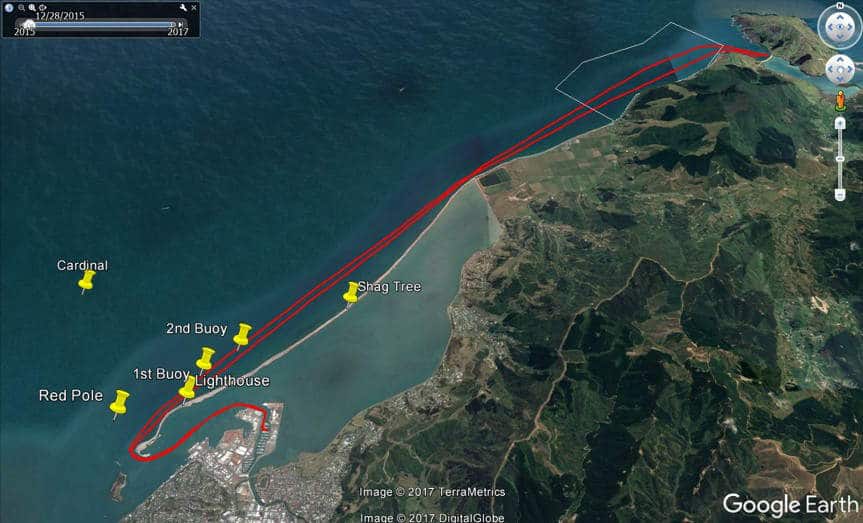

Kaiteriteri to Nelson 36km
We had a good run until just before the cut when the Northerly picked up and the Cut cutup really rough!! Then we had a long slog against tide and wind up the Haven back and a burst of speed for the finish into the Marina.
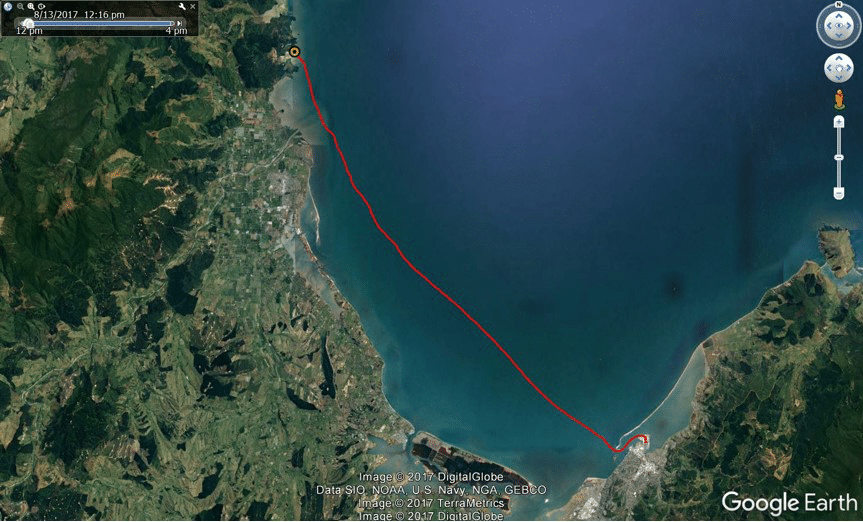
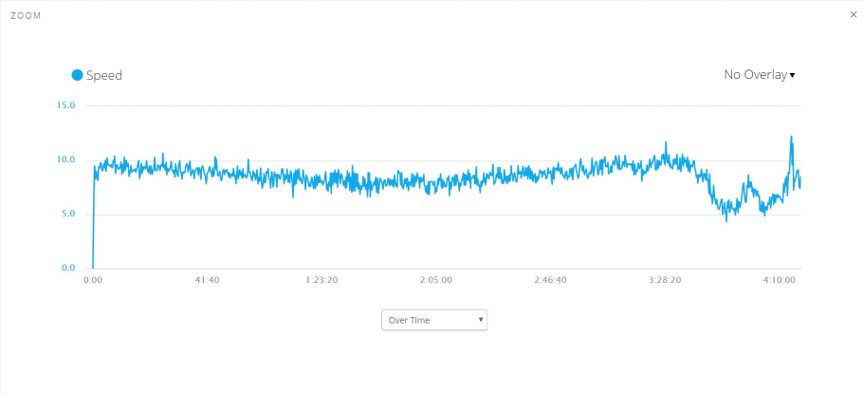
I paddle with the Maitahi Outrigger Canoe Club, a waka ama club in Nelson.
6 comments
Al Faatoese
Hi there,
I’m interested in whether you had a training plan to follow. I started waka last year and I’m keen to build up to long distance.
I respond better to following a set training programme and wonder if you did as well?
Jan Blythe
Hi Al
When I was doing long distance we were supporting a fellow paddler who was training for the Queen Liliʻuokalani Race so we were on his programme. It just involved paddling when we could all get together – no set programme. We did build up to the very long distances very carefully, starting with 12-15km then moving to 20-25km paddles before attempting the 36km or 44km we eventually ended up doing. Recovery time is the key I am finding as I get older.
My focus is currently sprints and yes, I do have a programme that our coach has laid out for us. I do find it easier to follow a programme. If you can find a coach who is willing to do one for you that would be great. Otherwise my advise would be to just build the distances up carefully over a few months.
Good luck.
Porina
Kia ora, are you able to tell me the location for LDNs 2020? I know it’s Picton, but where in Picton. Would be good to find accom close to the venue. Ngā mihi. Thanks for your kōrero above.
Porina
Jan Blythe
Kia ora Porina, LDNs 2020 are in Picton township (just as you get off the ferry). Most of the accommodation is quite close in. There are a range of options from backpackers, motels and holiday homes. I’m sure you will find something. We look forward to seeing you there. Cheers Jan
minarapa hazel-whare
Kia ora,
I am at student at toi ohomai, makoia campus studying bachelor or sports and recreation level 7.
I writing a 1250 word essay on “What type of nutrition best suits waka ama athletes?”. I was reading about you’re nutrition and was wandering if you any other information regarding this topic such at what kinds of foods (high proteins and/or carb diet)
I am also a paddler and interested in this topic not only for the essay but understanding more about it takes to be a knowledgeable paddler to assist and help but also challenge myself.
thank you, sincerely Minarapa
Jan Blythe
Kia ora Minarapa
Personally I am not a fan of the high carb diet. I know it was (and probably still is) popular with many athletes. At my age (68) protein is what is important for me.
I use a similar strategy for sprints as I do for long distance, protein before and after. The only difference is that with sprints I don’t hydrate in the race (of course). I do hydrate before and afterwards but usually just with mineral drops in the water.
For long distance, it depends on how long the race is, if you are doing change overs (where you can get different types of food in) or doing an iron distance. I am doing a 16km two man race at Long Distance Nationals this Easter and will probably only use the TailWind powder in my drink for the race. I’ll talk to a few other people and see if they have different things to say. I’ll let you know if I find out more information.
Cheers Jan